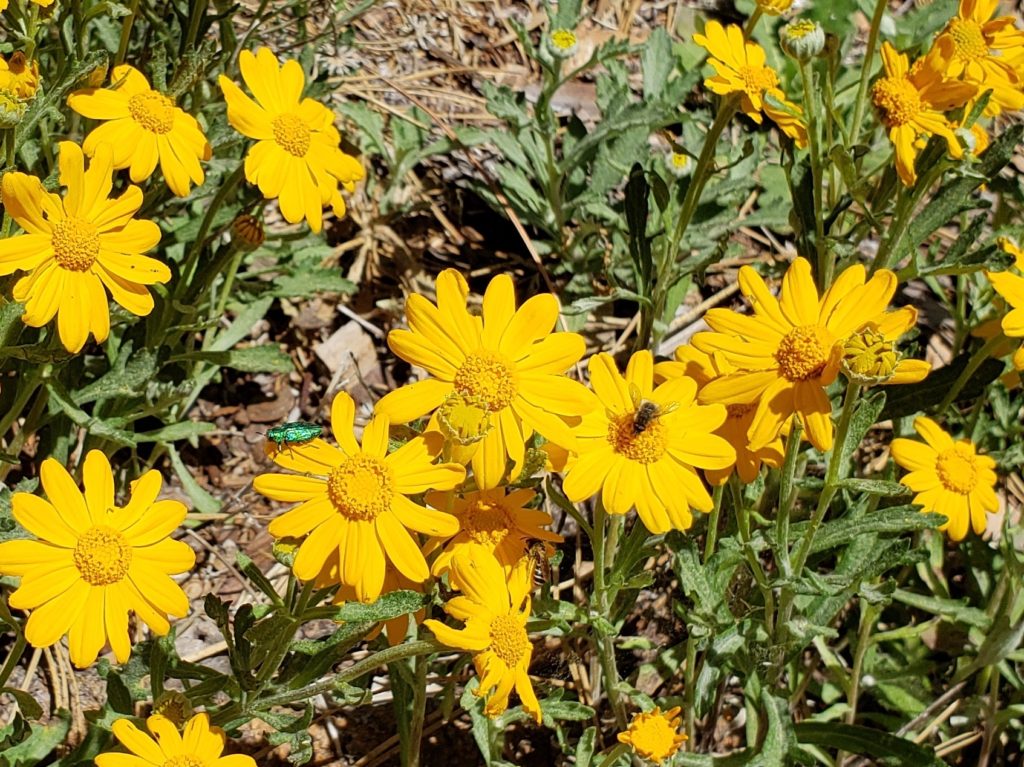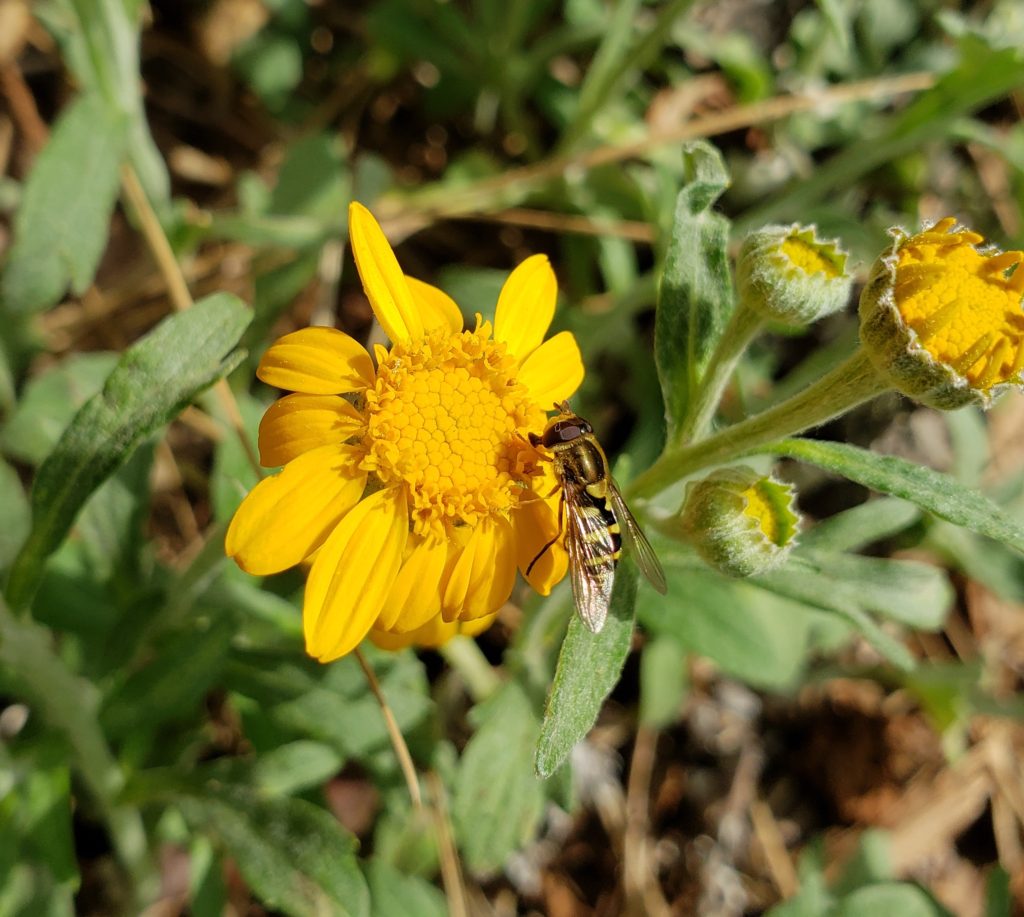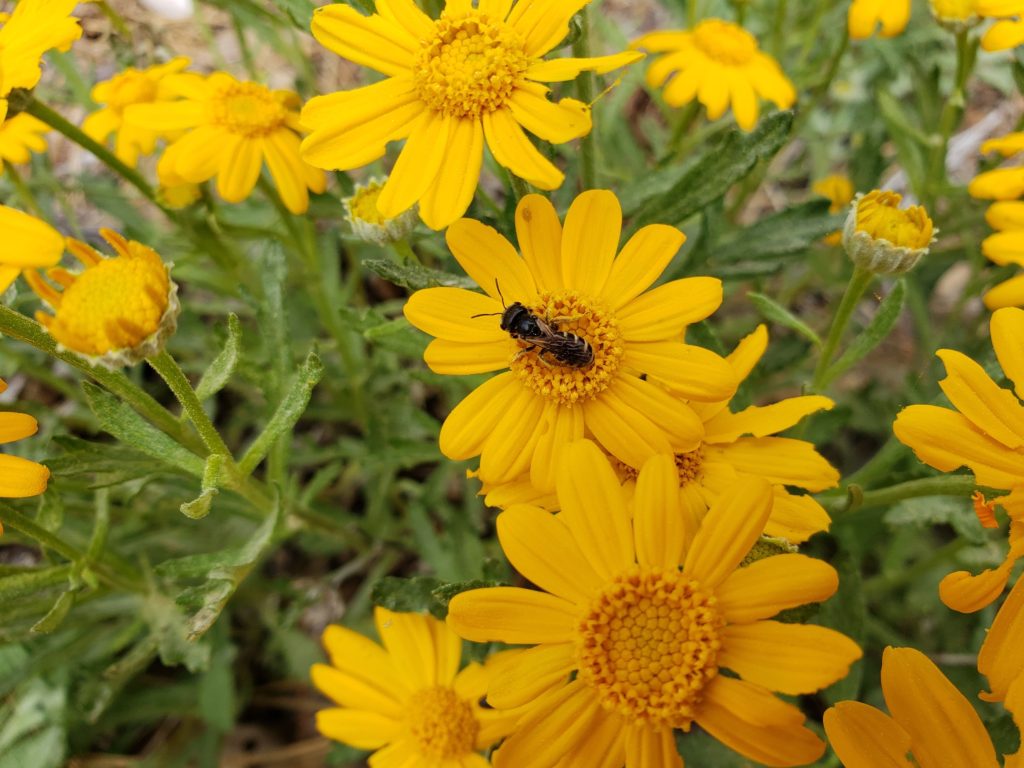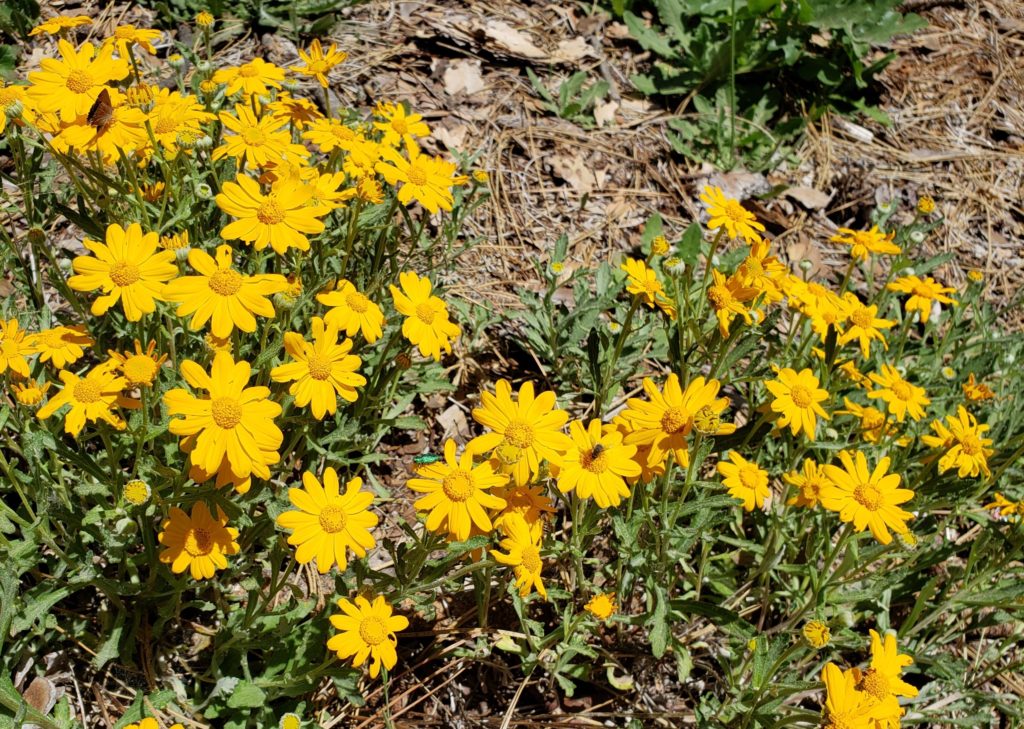I’ve discovered a nice little native groundcover with some good benefits.
Two years ago I moved into a new place. When I first looked at it, I saw a big, sunny, almost empty space that would be perfect for a new garden. I had a large collection of flowering perennial plants I was eager to get in before the summer was upon us. So I started planting as fast as I could.
I noticed several different herbaceous plants in the space and assumed they were native plants I wasn’t familiar with. I didn’t want to disturb them, so I removed as little as possible and tried to work around them. But one of the plants had pretty flowers. They were a rich, yellow daisy and little bees of all sorts were buzzing about them.
It’s a compact, sunny, flowering groundcover
I reluctantly pulled some out, (only a little!) and saw how they spread from underground stems. So I knew that whenever I removed them they’d grow back in. I strove to plant my perennial plants, whose flowers I really wanted for bouquets, and have them cohabitate with this pretty little plant which didn’t need anything from anyone and created a pollinator haven all on its own!

It’s a sunflower, of sorts
I learned that it’s “Woolly Sunflower” (Eriophyllum lanatum). It’s actually very common in the wild from southern California up to British Columbia. Somehow I’d never noticed it!
It’s in the Asteraceae family, commonly called the daisy family. That’s the family of the annual sunflowers we all love. The most obvious thing most of the plants in this family have in common, is that their flowers have a flat, yellow disk surrounded by petals, as in daisies and sunflowers.
This flat, yellow disk is where all the tiny true flowers are and they make a perfect landing platform for pollinators to drink nectar and collect pollen.
Pollination services are delivered with this groundcover
This little flower can be useful in your landscape by providing pollination services for your vegetable garden. It blooms from mid-spring through to fall, so it brings in pollinators early, and keeps them around to help pollinate your summer vegetables, like tomatoes and peppers.

It brings the best bugs to your landscape, too
It’s not just the honey bees that are so important for a healthy planet. There are thousands of other native bee species that are also in decline and are even better pollinators. And there are many other insects that play key roles in nature’s checks and balances. Many beneficial insects rely on nectar and pollen in one phase of their lives but parasitize or eat other insects for the other part of their lives. And the whole lot of them can become food for birds, which are also part of the checks and balances of nature. It keeps pest populations from getting out of control.
Woolly sunflower provides pollen and nectar to many insects. Plus, it supports up to 7 moths or butterflies with its foliage (possibly flower petals, too, since some of my flower petals are a bit chewed up).
Give it your toughest, sunny conditions
Woolly sunflower is an evergreen plant with gray-green foliage that gets to about a foot tall with flowers and spreads to 3-4 ft. The flowers are about an inch across.
It thrives on little to no water, making it very for good drought tolerant gardens.
It likes full sun yet tolerates a little shade, and tolerates poor soils. So it’s good for hot, sunny spots, and slopes.
It’s deer resistant, too!
The cheerful, yellow flowers start to appear in mid-spring and continues flowering all season long into fall.
Mine grows in a soil that has had wood chips from native trees covering the soil and does great with zero attention from me. Some are near vegetable beds and I’ve woven my drought tolerant perennial flowers all around the woolly sunflowers so those end up getting some water in the summer.
I believe I’ve reached a good balance of cohabitation with the flowers I love to make bouquets with, culinary herbs, and this lovely little native groundcover in a drought tolerant garden. But I’m hoping the woolly sunflower fills in even more.
You can get it started in your landscape
If you have a bare, sunny spot and you want to do something good and pretty for the pollinators and all the other good insects, consider putting in woolly sunflower.
I’ve seen woolly sunflower in local nurseries and it’s grown by the wholesale nursery, Suncrest. So it may be available locally if you ask for it. In the website, Calscape.org, you’ll find this plant and a list of nurseries that carry or grow it.
Since it spreads, it’s easy to divide and replant it so you can start with just a few plants.
You wouldn’t need an irrigation system with these, just an occasional soak with a sprinkler would do. Especially if you pant it in fall.
Pollinators on flowers provide teachable moments for children
Pollinators are in decline, and insects in general are in decline worldwide. We must do all we can to help create habitat native insects need.
Children may not grow up knowing much about the diversity of insects and their importance to a healthy ecosystem. The variety of insects and pollinators I’ve observed on these little flowers has not ceased to amaze me.
Woolly sunflowers and all the insects that “work” them could provide many teachable moments for children to help them appreciate and learn about the natural world. If you’re a parent or a grandparent, plant a little patch and show your children what a cool world it is.


